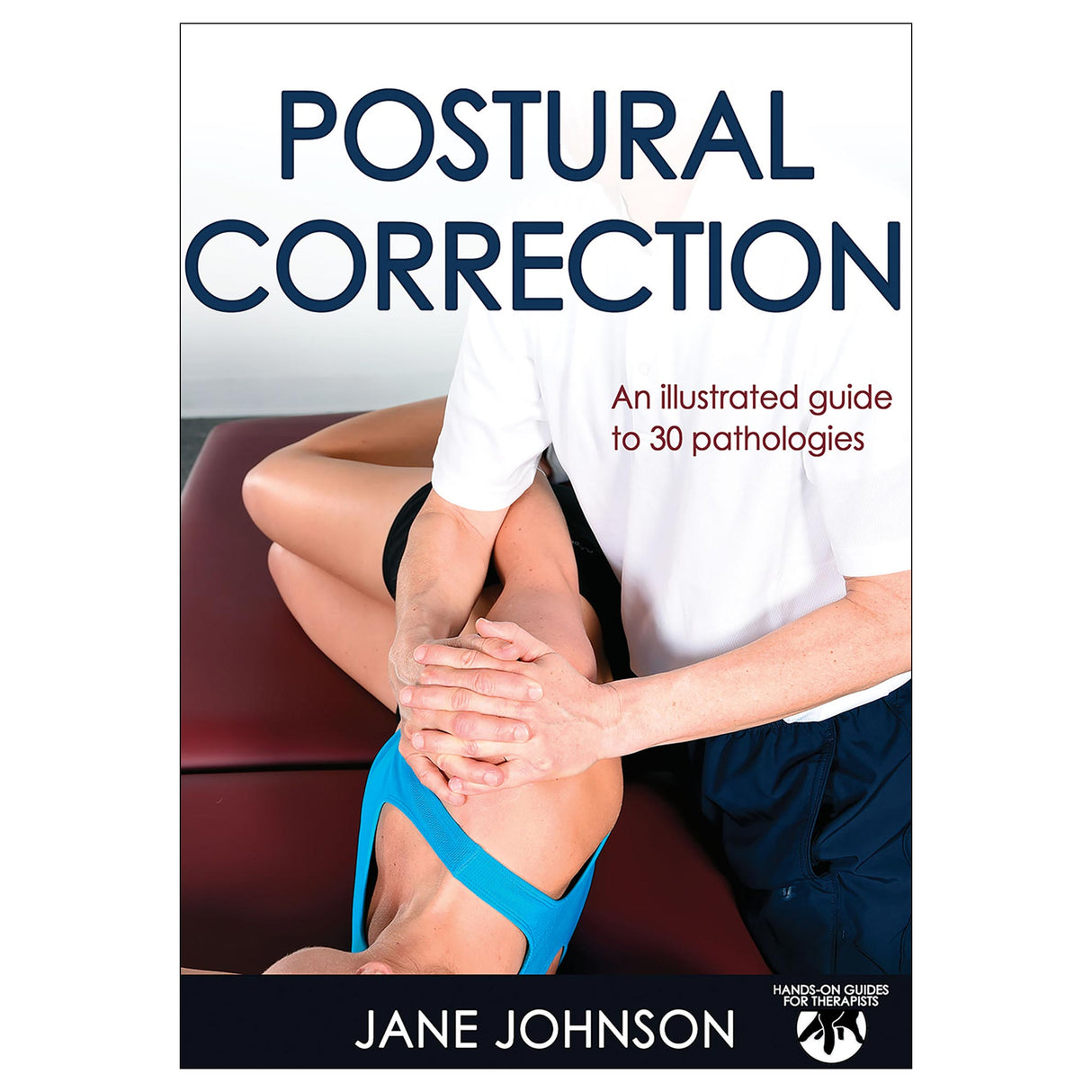Postural Correction PDF
Author: Jane Johnson
$30.00 USD
Access Duration: 10 Years
Postural Correction presents 30 of the most commonly occurring postural conditions in a comprehensive format, providing hands-on therapists and body workers the knowledge and resources to help clients address their malalignments. Focusing on treatment rather than assessment, it takes a direct approach and applies specific techniques to improve posture from an anatomical rather than aesthetic perspective.
Primarily concerned with the lengthening of shortened tissues to help realign body parts, Postural Correction offers a collective approach to remedying malalignment. Techniques vary for each posture correction, including deep tissue massage, simple passive stretches, soft tissue release, common trigger points, and gentle limb traction. Because weak or poorly functioning muscles may contribute to postural problems, the text notes what muscles need to be strengthened and includes recommendations on techniques. Suggestions also are made for those postures that are difficult to correct with hands-on techniques, such as scoliosis, genu valgum (knock knees), and genu varum (bow legs).
Recognizing that the work clients can carry out independently is a crucial component of long-term postural correction, this guide includes information on how clients can continue their therapy independently between or at the conclusion of their therapy sessions. Therapists can take these techniques and recommendations to advise, educate, and guide clients in their efforts. Much attention is paid to lifestyle, activities, and habitual use or resting of a body part that may have led to the initial pain and malalignment.
Structured by anatomical regions of the body to make accessing information quick and easy, Postural Correction tackles postural concerns commonly affecting the spine; pelvis; upper limbs, including the shoulder and elbow; and lower limbs, including the hip, knee, ankle, and foot. Examples from various sports and demographics such as the elderly offer contextual and applied value. Descriptions avoid biomechanical jargon and instead focus on simple, clear explanations. Information is also included for when hands-on techniques are limited in correcting a particular posture.
Special features make this book unique and useful:
• Full-color anatomical illustrations and photographs present a clear visual of what will help bring about postural change.
• Consistency with the other titles in the Hands-On Guides for Therapists series ensures that the manual therapies throughout this book are easily accessible.
• An overview of each malalignment includes the muscles that are shortened or lengthened, notes about each posture, a bulleted list of ideas grouped according to whether these are carried out by the therapist or the client, and rationale for the suggested corrective techniques.
• Concluding comments summarize the information for access at a glance.
Earn continuing education credits/units! A continuing education course and exam that uses this book is also available. It may be purchased separately or as part of a package that includes all the course materials and exam.
Part I. Getting Started With Postural Correction
Chapter 1. Introduction to Postural Correction
Causes of Postural Malalignment
Consequences of Malalignment in the Body
Who Might Benefit From Postural Correction
Contraindications to and Cautions for Postural Correction
Closing Remarks
Chapter 2. Changing Posture
Determining Start of Postural Correction
Five Steps to Postural Correction
Techniques for Postural Correction
Aftercare
Gaining Rapport and Enhancing Engagement
Referral to Another Practitioner
Tailoring Your Treatments
Closing Remarks
Part II. Correcting the Spine
Chapter 3. Cervical Spine
Increased Lordosis
Lateral Neck Flexion
Forward Head Posture
Rotation of the Head and Neck
Closing Remarks
Chapter 4. Thoracic Spine
Kyphosis
Flatback
Rotated Thorax
Closing Remarks
Chapter 5. Lumbar Spine
Increased Lordosis
Decreased Lordosis
Closing Remarks
Chapter 6. Scoliosis
Types of Scoliosis
Closing Remarks
Part III. Correcting the Pelvis and Lower Limb
Chapter 7. Pelvis
Anterior Pelvic Tilt
Posterior Pelvic Tilt
Pelvic Rotation
Laterally Tilted Pelvis
Closing Remarks
Chapter 8. Lower Limb
Internal Rotation of Hip
Genu Recurvatum
Genu Flexum
Genu Varum
Genu Valgum
Tibial Torsion
Pes Planus
Pes Caves
Pes Valgus
Pes Varus
Closing Remarks
Part IV. Correcting the Shoulder and Upper Limb
Chapter 9. Shoulder
Protracted Scapula
Internal Rotation of Humerus
Winged Scapula
Elevated Shoulder
Closing Remarks
Chapter 10. Elbow
Flexed Elbow
Hyperextended Elbow
Closing Remarks
“An ideal instruction reference for students, therapists, and the non-specialist reader with an interest in postural correction issues. “Postural Correction” is as informative and educational as it is thoroughly ‘user friendly’ in content, tone, organization and presentation. “Postural Correction” is very highly recommended for professional, community, and academic library Health/Medicine instructional reference collections.”
--The Midwest Book Review
“Therapists will use different techniques for different clients and this book helps guide them through the possibilities. It also helps therapists think outside the box and approach clients in a different way, if one technique is not working. The photographs are very helpful… Having a book like this will help therapists take the skills they already have and apply some new theory and techniques to help their clients. The book is written at an appropriate level, not going into too much scientific detail that might be beyond the needs of some massage therapists. Yet, it still challenges therapists to approach their treatments differently.”
--Doody’s Book Review





